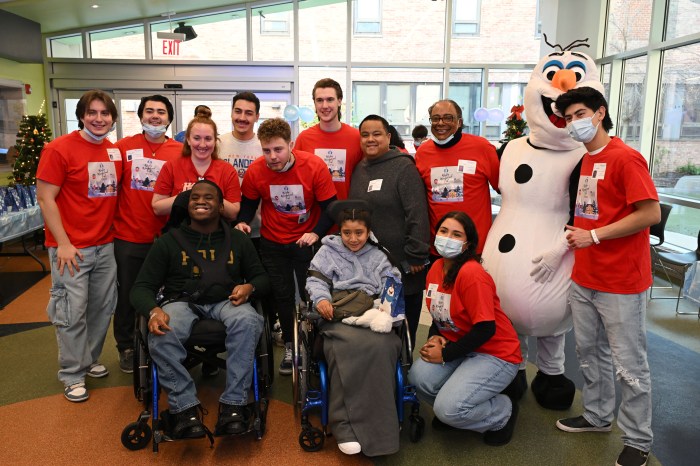In response to the editorial published in the April 4-10 edition of the Bayside Times, we feel it is imperative to rebut some of the points made regarding horse-drawn carriages in New York City.
Unfortunately, the truth of the matter is that the dangerous and inhumane horse-drawn carriage industry in the city should have been banned long ago. So many accidents have occurred where the horses have been spooked by traffic, crashing into vehicles, or collapsed due to heat exhaustion near Central Park.
The inherent problem with forcing horses to pull carriages in Midtown Manhattan is that horses have a highly developed flight drive. This is because they evolved as prey animals — their natural instinct when frightened is to run. Horses frighten easily, and one can hardly think of an environment with more frightening stimuli for a horse than Midtown Manhattan. Passengers and drivers have been thrown from carriages to the pavement as a result of these spooking accidents.
The horses also cannot be expected to function in such a high volume environment during the hot summer months in the city without collapsing on the street. It is a tragedy waiting to happen every day those horses are on the streets. And the carriage horses operate far outside the confines of the park — including Times Square, Columbus Circle and Ninth Avenue, all areas with treacherous traffic conditions. This creates a constant public safety threat.
Although the editorial references a Quinnipiac poll indicating that more than 60 percent of New Yorkers oppose a horse-drawn carriage ban, the poll, which surveyed 1,234 participants, does not tell the full story. A more recent, March 2014 Crain’s New York Business poll surveyed a total of 37,201 readers, resulting in 76 percent of participants voting in favor of a ban — and this reflects the overwhelming majority of polls taken in the past several years.
The editorial further references a proposal that stables for the horses be located in Central Park as some kind of compromise. This is not possible for several reasons, nor would it solve the root problem of carriage horses operating in Midtown Manhattan even it if were possible.
First, Central Park is a historical landmark and the city Parks Department and the Central Park Conservancy would never approve turning over a quarter of parkland that would be required in order to build stables for more than 200 horses. It is also unacceptable to propose losing a quarter of our precious public park space in Central Park paid for by tax dollars to a privately run industry.
Second, asking for more humane regulations is not a solution because the rules and regulations we do have are not adequate nor properly enforced. The city agencies responsible for enforcing the laws governing the carriage horses have been asleep at the wheel for a long time. State Sen. Tony Avella (D-Bayside) held public hearings at City Hall years ago that showed this to be the case in regards to the city Consumer Affairs and Health departments.
The truth of the matter is that the existing conditions for the carriage horses have never been adequate. The stall size for the horses is legally 60 square feet minimum when experts recommend that it should be 144 square feet for horses the size of carriage horses. There is also no turn out to pasture, something horses need every day in order to be physically and psychologically healthy.
The fact is that a horse needs daily pasture time to socialize with other horses and mutually groom each other to reduce stress. There is no way to remedy this problem. Working nine hours a day in dangerous, inhumane conditions on hard pavement and then going back to a tiny stable is no life for a horse.
There have been more than two dozen serious accidents in the past few years involving horses running out of control through city streets, crashing into cars, dropping dead on the street and more. In December 2013, a carriage driver was arrested for animal cruelty charges when an NYPD officer noticed that the driver’s horse was visibly injured — the driver admitted to forcing the horse to work for four days.
Mayor Bill de Blasio has pledged to save these horses by taking them out of danger and ensuring that they are placed into safe sanctuaries through a ban. Only then will these horses have the freedom they are denied in the city where they have no pasture to graze, move about freely, interact with other horses and simply exist as animals instead of being treated as machines.
Tony Avella
State Senator
(D-Bayside)
Edita Birnkrant
New York Director
Friends of Animals
Darien, Conn.
Elizabeth Forel
President
Coalition to Ban Horse-Drawn Carriages
Manhattan


































